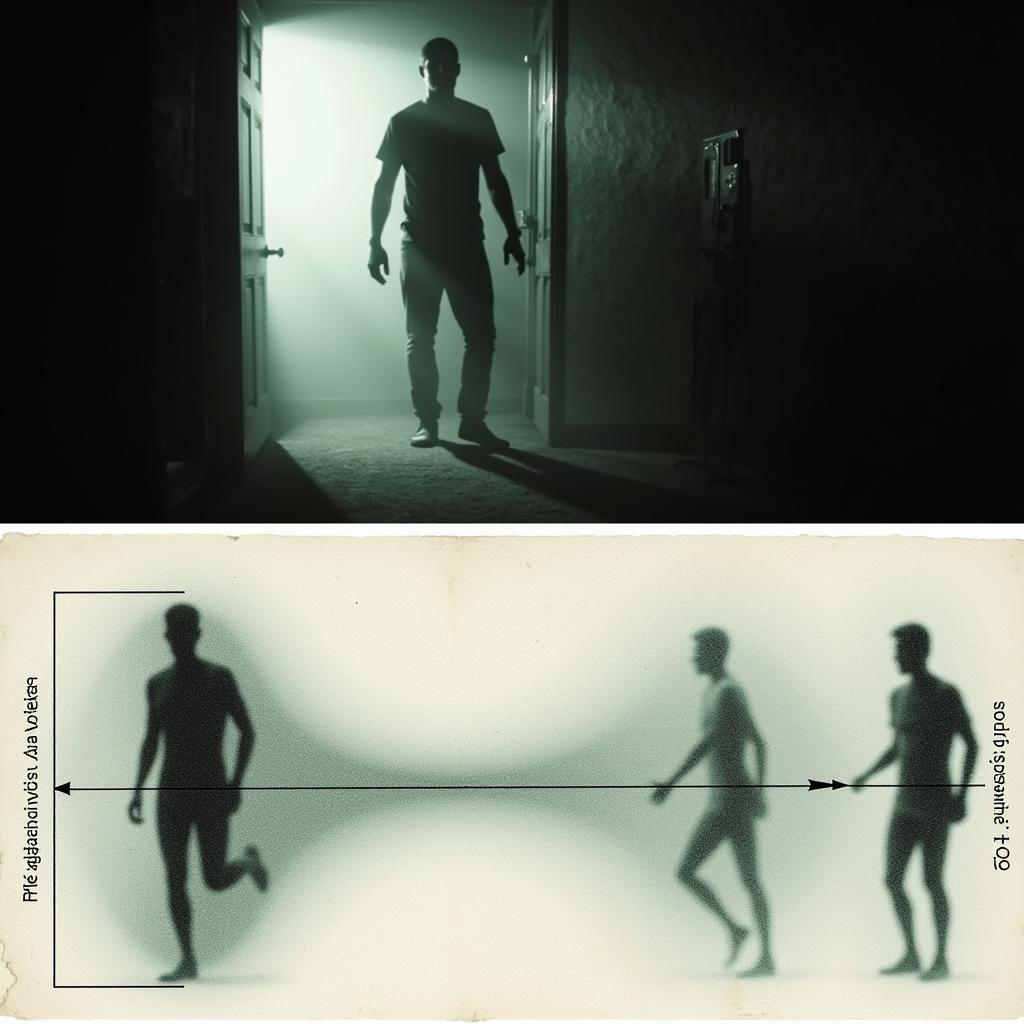The world of the paranormal is a vast and mysterious ocean, and “Reelin For Research” is the perfect analogy for the process of exploring its depths. We cast our lines into the unknown, hoping to snag a glimpse of something extraordinary, something that defies conventional explanation. But what are we looking for, and how do we know when we’ve found it? This journey into the unexplained requires careful consideration, meticulous methodology, and a healthy dose of skepticism.
Diving Deep into Paranormal Research
Paranormal research, by its very nature, delves into phenomena that exist outside the realm of established scientific understanding. This includes everything from ghostly apparitions and unexplained noises to psychic abilities and cryptid sightings. Reelin for research in this field means embracing the unknown, asking difficult questions, and seeking evidence that can shed light on these enigmatic occurrences.
Reelin for Research: Tools and Techniques
What tools do we use when reeling for research in the paranormal? While the stereotypical image might involve ghost hunting gadgets, the reality is much more nuanced. Effective paranormal investigation relies on a combination of traditional scientific methods and specialized equipment. This can include:
- Audio recorders: Capturing unexplained sounds, electronic voice phenomena (EVP), and other auditory anomalies.
- Cameras: Documenting visual phenomena, changes in environment, and potential evidence.
- Electromagnetic field (EMF) meters: Detecting fluctuations in electromagnetic fields, which some believe are associated with paranormal activity.
- Thermometers: Identifying sudden temperature changes, another potential indicator of paranormal presence.
Beyond equipment, meticulous documentation, rigorous analysis, and critical thinking are essential. Every piece of evidence must be scrutinized, potential alternative explanations explored, and biases acknowledged.
The Importance of Skepticism in Paranormal Research
While a sense of wonder and open-mindedness are valuable, skepticism is equally crucial when reeling for research in this field. It’s easy to jump to conclusions, especially when dealing with the unknown. A critical eye, a willingness to question assumptions, and a commitment to objective analysis are essential for separating genuine anomalies from misinterpretations and hoaxes.
Common Misconceptions in Paranormal Investigations
One of the biggest challenges in paranormal research is differentiating between genuine phenomena and more mundane explanations. Often, what seems paranormal at first glance can be attributed to natural occurrences, environmental factors, or even psychological phenomena. For example:
- Infrasound: Low-frequency sounds undetectable to the human ear can cause feelings of unease and even hallucinations, often mistaken for paranormal activity.
- Electromagnetic fields: Fluctuations in EMF can be caused by faulty wiring, nearby power lines, or other common sources, and may be misconstrued as evidence of paranormal activity.
- Pareidolia: The human tendency to perceive patterns in random stimuli can lead to seeing faces in shadows or hearing voices in static, fueling misinterpretations of sensory input.
 Common Misconceptions in Paranormal Investigations: Separating Fact from Fiction
Common Misconceptions in Paranormal Investigations: Separating Fact from Fiction
The Ethics of Reelin’ for Research
Ethical considerations are paramount in paranormal research. Respect for the living and the deceased, sensitivity to cultural beliefs, and the responsible handling of information are all crucial. This includes obtaining informed consent from anyone involved in an investigation, protecting the privacy of individuals, and avoiding sensationalizing findings.
Dr. Evelyn Reed, a renowned anthropologist and paranormal researcher, emphasizes the importance of ethical conduct: “Our pursuit of knowledge should never come at the expense of respect and sensitivity. We must approach our investigations with humility and a commitment to responsible practices.”
Conclusion: The Ongoing Quest for Understanding
Reelin’ for research in the paranormal is a continuous journey of discovery. While definitive answers may remain elusive, the pursuit of knowledge, coupled with rigorous methodology and ethical conduct, can bring us closer to understanding the mysteries that lie beyond the veil of the ordinary. The quest to understand the paranormal continues, and with each carefully cast line, we inch closer to unraveling the enigmas of the unknown.
FAQ
- What is EVP?
- What is an EMF meter?
- How do I conduct a paranormal investigation?
- What are some common explanations for paranormal experiences?
- Are there any dangers associated with paranormal research?
- How can I learn more about Paranormal Research?
- Where can I find reputable resources on paranormal phenomena?
Common Scenarios and Questions:
-
Scenario: Hearing unexplained noises in an old house.
-
Question: Could this be paranormal activity?
-
Scenario: Feeling a cold spot in a room.
-
Question: Is this a sign of a ghostly presence?
-
Scenario: Witnessing an unexplained light anomaly.
-
Question: What could be causing this phenomenon?
Further Exploration:
- Suggested Articles: “Understanding EVP,” “The Science of Ghost Hunting,” “Debunking Paranormal Myths”
Need Help?
Contact us for 24/7 support: Phone: 0904826292, Email: [email protected] or visit us at No. 31, Alley 142/7, P. Phú Viên, Bồ Đề, Long Biên, Hà Nội, Việt Nam. Our team is ready to assist you.